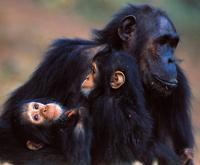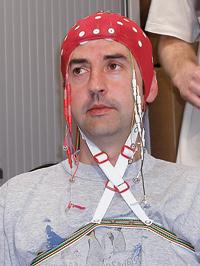Itziar Laka: "Bilingualism is biologically interesting, since it is a human trait"

Itziar, what experience was working in the group of linguist Chomsky?
It was an incredible experience. An authentic luxury for a researcher. I finished the race at the UPV and went there. I spent four years doing my doctorate and then worked at a university there. In the end, I spent 9 years in the United States. I had the opportunity to learn a lot, so I keep it among the best moments of life.
You are a linguist, but you do not investigate the language as people would think.
It is true. In fact, our goal is, in some way, to understand the language, and for this it is important to analyze the characteristics of the languages. But as in the brain we have a specialized space that allows us to speak, to understand the language, we must understand to what extent the structure of the brain conditions the structure of the human language itself and to what extent the peculiarities of the brain allow to explain a thing like the language, considering that the rest of animals have not developed a language like ours. Therefore, there is something in the brain that makes us capable of appropriating the language.
We begin to speak in the newborn, but how do children appropriate the language?
Most will think that children begin to acquire the language with 6-8 months, when they start saying “mother”, “father”, “putu da”, etc. That with the production begins to acquire the language. But today we know that a child at birth distinguishes some of the characteristics of the maternal language, which is what he has heard in the womb.

Furthermore, children are born with the ability to distinguish all the phonemes that can sound in human languages. In unknown languages there are sounds that we, adults, do not distinguish. For example, the Japanese and the Chinese do not distinguish between L and R, and we also pass the same with the sounds of Japanese and Chinese; we do not separate them, we do not hear them. But newborn children distinguish all the sound contrasts that exist in all languages. And the development of phonology is not the learning of phonemes or sounds, but the loss of differentiation capacity. Any Japanese child, at birth, separates the L and R sounds well and stops perceiving them as he discovers Japanese phonology.
All this occurs in the first 4-5 months. From there, children begin with structures. In this continuous flow of words that listen to adults, they begin to perceive where syllables are, and for this purpose they use statistics. They are skilled statisticians, study the frequencies. And they start making noises of “ma”, “ba”, “pa” when they have noticed all the phonology and syllables at approximately 6 months. Production begins to form, but by then it already knows things. And it's nice to see that all children around the world start to sound the same sounds: Vocal “a” and lips, like “ma”, “ba”, “pa”. That is why they are usually “mother”, “mama”, “pope”, “mommy”...
Then they begin to specialize in some way, and make sounds of their own language. For example, a Basque child leaves late a sound like “rra”, or Z and S, which do not appear in most languages of the world. When he turns three, he has learnt the language as we now could not learn.
Children are the ones who most easily learn languages. Does this mean that this ability to learn languages has a critical period in the brain?
It is not something that goes from black to white, but the sooner, the more it costs us. If there are exceptions, of course. There are people who somehow keep that capacity forever. One of the linguists I directed the thesis, Kenneth Hale, was known all over the world, not only for being a good linguist, but also because he had that capacity. I remember once I came in the office and suddenly asked me in Basque: “Is this book yours?” and I had no idea of American accent. For 15-20 days I was able to learn a new language.

But it is usually said that language empowerment has a stage, a childhood, and that once that age has passed that capacity is oxidized. From there we learn all languages differently.
Are there differences between the brains of children and adults?
One cannot yet say with certainty, but there is a central hypothesis. The brain of young children under a microscope is different from that of adults. To begin with, as they mature, many neurons disappear. Neuronal connections that are not used or that are not very intense from the point of view of the input are simply cut, disappear.
For this reason, the brains of young children have many more neuronal connections. Carrying a little more understanding to the extreme, we could say that almost all neurons in the brain are interconnected to each other, unlike adults. In fact, in the development of the brain there is a particularly prominent phenomenon in the human bubble against other primates and cetaceans: myelination.
Myelin is a fat substance. To understand its role, it can be compared with plastic tubes that cover the cables. Imagine that we want to put many wires from one side to the other at home, so we protect them with plastic tubes. The same thing happens in the brain: when a connection between neurons is very strong, because it is used a lot, myelina isolates that connection. This makes the connection that goes inside much faster, but it also has the advantage that it prevents those neurons from creating new connections with other neurons. That's why it's hard for adults to learn new things. However, young children can easily make new connections.
In your laboratory you investigate bilingualism. But if it is still quite unknown how we learn a language, it will be even more complicated to analyze how we appropriate more than one language.

To the inhabitants of the West it may seem that bilingualism is a rare situation, but in our evolutionary history the most common is that it is multilingual, at least if it is statistically more abundant.
In addition, bilingualism is a biologically very interesting phenomenon. This does not occur among the rest of animals. There are animal species that have some communication system, such as bees and squid, which communicate, although they do so with very rigid patterns. But there is no bilingualism. Bilingualism is a characteristic of human language, which is why it is very interesting.
What happens is that countries with more money for research are monolingual or, at most, with a late bilingualism. Little space to properly investigate bilingualism, with a large amount of bilingual, sociologically equivalent population: One is Catalonia and another Euskal Herria. Ours is a privileged place, an ideal street laboratory. Here we can investigate the differences between monolingual children and bilingual children when purchasing the language.
What happens when we master several languages in the brain?
In the case of bilingual, the important thing is when the two languages have been learned. In fact, the brain is designed to work the tongue in the left hemisphere, where the congenital tongue is located. Especially in the fields of Broca and Wernicke.
The same happens if the bilingual is early aware of the two languages. However, when we study a second language after adolescence, it appears dispersed in the brain, dispersed in the right and left hemispheres. Perhaps because the process of myelination has been evolving, perhaps because we have the learning mechanisms removed... we do not know why, but it seems that the brain treats the second language in another way, as if it were not the language.
Anyway, the language has many sections and the appropriation of all is not done at the same time: for example, we realize very soon of the phonology, but the acquisition of the syntax begins later. Therefore, if we learn a second language later, we will always have a strange accent, but we could learn syntax or syntax as a child.
You have also thought about doing some research in schools. What does it consist of?


Yes, we have built a mobile laboratory with which we will go to children's schools. Sometimes they will be very young children, in others they will be 4-5 years. We want to experimentally investigate how the two languages are acquired.
The word experimentation often gives fear, but it poses no danger to the child. In the case of monolingual children we know what representation this word has in the brain when you learn a word: for example, the “doll”. As in writing it does not keep all the phonemes: p+a+n+p+i+n+a. The sounds of beginning and end are the most important and only learn the limits of the word. Then it gives importance to the accent vowel and gathers it in the representation. And with time he is completing that representation until he has the complete “doll” that we have adults.
Thanks to a study carried out in Catalonia we know that bilinguals who speak Catalan and Spanish do not like monolinguals: they try to save the maximum with the words of both languages. The words of both languages gather above all the phonemes they have in common. What we want to know is whether this is a strategy of all bilinguals or whether it is a characteristic of bilinguals who speak Catalan and Spanish, since the words of both languages have a great phonological similarity. What we want to know is that when a Basque uses that same strategy, he composes words in Basque and Spanish, which will normally be very different. Therefore, we want to see with what phonological precision these new words in the brain keep small children taking the lexicon.
Buletina
Bidali zure helbide elektronikoa eta jaso asteroko buletina zure sarrera-ontzian











